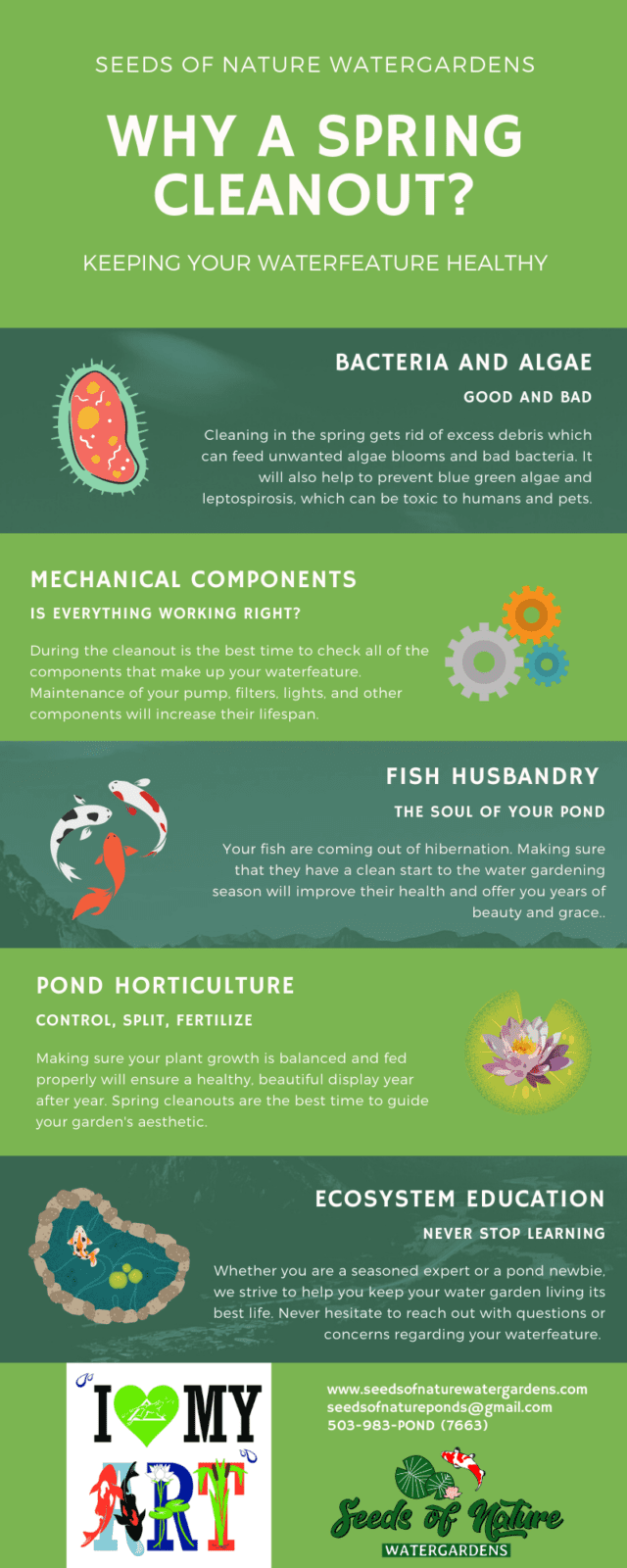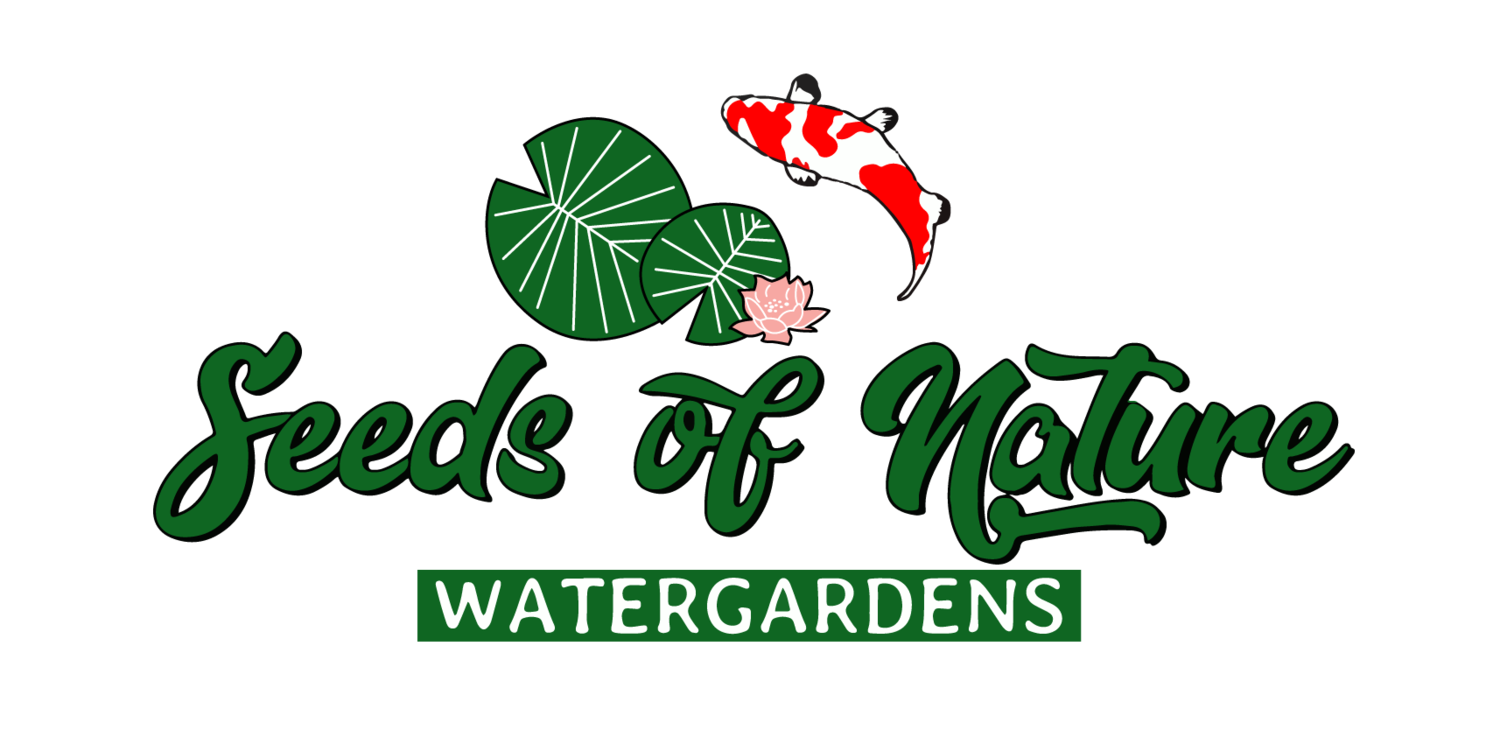Are you looking for pond cleaning in Grants Pass, Medford, Ashland, Central Point, Jacksonville, Williams, New Hope, Applegate, White City, Gold Hill, Talent, Merlin, Hugo, Oregon? We are southern oregons only certified aquascape contractor who provides the best pond maintenance in the rogue valley.
How Often Should a Pond Be Cleaned?
Biannually. Every two years as a minimum you should have your pond drained and cleaned. Possibly sooner if you do not have a skimmer or any biological filtration. Dead organic matter will collect and reduce your water quality over time. Monthly maintenance coupled with proper pond components will give you more time but generally every other year is your best bet. Why you should perform regular maintenance: Seeds of Nature Pond Maintenance Blog Article
How Much Does It Cost To drain And Clean A Pond?
Depends on the company. We charge per square foot with a minimum. Generally you can expect anywhere from $600 to $1500 depending on the size of your pond. Other factors that you should consider other than the size of your pond are when the last time the pond was cleaned, the fish load, overgrown plants, and access to the pond. You can send us a photo of your pond here and we will get back to you with a free online quote.
What Is The Best Time Of Year To Clean Out A Pond?
Early spring is the best time to clean out your pond. Ideally before the water is consistently above 55F. This is because you do not want to restart the beneficial bacterial colonies once they become established since it takes four to six weeks for them to build a colony. We are simulating the natural event of snow melt rushing through the rivers and streams cleaning out debris.
If you’re interested in the science of biomimickry theres no one better than Ed The Pond Professor.

Why Clean A Pond?
Enclosed systems will eventually become clogged with organic material. Whether that is dead and decaying foliage like leaves and pond plants, or it is bacterial colonies that have died during the cold. You have remove this material with a pond cleaning. If you do not, then this organic material will break down and feed excess algae blooms. It can also feed parasitic microfauna and fungus that can harm your plants and fish. Aside from the harmful effects on your pond stock, you want your pond to look great and not be overrun with algae. We go over some common algae types and ways to deal with them in this article.
Also think of a yearly cleanout as a physical. You want to make sure all of the components in your pond are working in their best condition. Preventative maintenance is key to a long lasting and healthy ecosystem. Sometimes you can discover a leak before it occurs. If you already have a leak in your pond you can go through our leak checklist.
Can I Clean My Pond Myself?
Yes. Easily. It is very simple, but I must warn you it can be disgusting. You will get wet. You will smell like pond scum. It might take you a long time. But I hope I can save you some time. Shoot for early spring, when the pond water has been consistenty above 50F. You are simulating a natural event of snow melt cleaning out a river. And doing this right before the bacteria and microfauna have time to recover will ensure you give your pond the best start to the season.
If you do not want to go through the trouble then take a photo of your pond, attach it to our form here and we will get back to you with a quote. We generally begin cleanout season at the end of February, beginning of March.
What You’ll Need For Your Pond Cleaning
– A pressure washer, 6k gas powered would be the max power I suggest.
– A holding tank for fish and water, intex pools, rubbermaid contatainer
– Garden hose with pressure nozzle,
– Fish Net
– Trash Pump, Pool Pump
– Trimming Shears
– 5g Bucket
Steps For Pond Cleaning
1. Set up your holding tank. Make sure the tank is clean so that you do not introduce any foreign contaminants to your fish.
2. Turn off your pond pump. Allow the water to drain from your filter back into your pond. Release any check valves.
3. Put the cleanout pump into the pond. If there is a lot of debris try and put the pump on a shelf to limit the amount of dirty water going into the holding tank. Begin pumping pond water into the holding tank. If the tank becomes full then find an area you can dump the rest of the pond. This water will be liquid gold for a garden.
4. As the pond water is receding hook up your pressure washer. Remove your filter mats and pond pump from your skimmer. Clean the filter mats and pond pump with your hose.
5. Once the pond water is about 8 inches deep begin catching your fish. Be careful while handling the fish. If you must touch the fish with your hands make sure your hands are wet to limit removing their slime coat. Inspect each fish for their health and note anything unusual like lost scales, growths, or white spots.
6. Remove large debris by hand using the 5g bucket. Trim, split, and fertilize any pond plants as you see fit. Check any pond lights to make sure they are all working. Replace lights as needed.
7. Using the pressure washer, start at the top of your stream if applicable and work your way down to the pond. If you have pooling areas, set up the cleanout pump in each pool to remove dirty water in sections. If you have an extra hose and hookup then putting a hose in each pool to help rinse will save you time.
8. Pressure wash the pond starting at the top edge and working your way down to the bottom. Make sure you get in the nooks and crannys of the rocks.
9. Rinse down the pond with the garden hose, top to bottom. Move the cleanout pump from pool to pool, and from shelf to shelf. The goal is to remove dirty water from each area before it can settle to the bottom of the pond. This saves extra work.
10. Once the entire pond is clean, and the water you are rinsing with is clear, you can then remove the cleanout pump. Continue running the hose into the pond.
11. Put the cleanout pump into the holding tank. Begin pumping water into the pond.
12. Transfer the fish back into the pond. Add water treatments such as water conditioners if adding new water.
13. Reinstall filter pads and pond pump to skimmer. Attach check valve.
If you prefer to watch a video how to: Pond Cleanout With Aquascape
And that is it!
A lot of work, but if you do this every spring you will have a happy, healthy ecosystem for the entire year. Your fish might spawn as well. So if you see some white foam at the top of the pond you know the fish are happy. Let us know if you need help with your pond cleaning!
